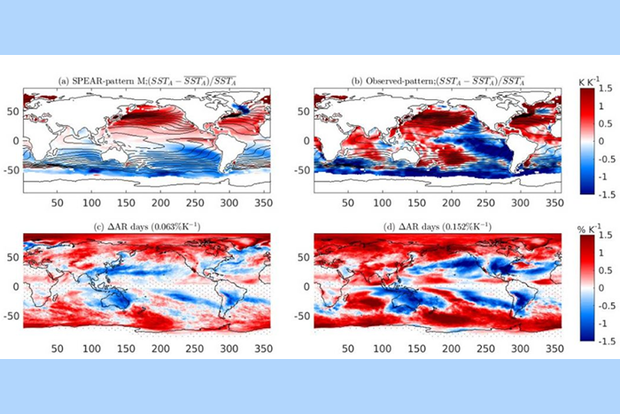Crucial role of sea surface temperature warming patterns in near-term high-impact weather and climate projection

A new study compares observed and modeled sea surface temperatures. Credit: doi:10.1038/s41612-024-00681-7

A new study compares observed and modeled sea surface temperatures. Credit: doi:10.1038/s41612-024-00681-7
Recent studies indicate that virtually all global climate models have difficulty simulating observed sea surface temperature (SST) trend patterns over the past four decades. Models produce enhanced warming in the eastern Equatorial Pacific (EPAC) and Southern Ocean (SO) warming, while observations show intensified warming in the Indo-Pacific Warm Pool (IPWP) and slight cooling in the eastern EPAC and SO.
Using Geophysical Fluid Dynamics Laboratory’s latest higher resolution atmospheric model and coupled prediction system, the authors show that model biases in sea surface temperature trend pattern have profound implications for near-term projections of high-impact storm statistics, including the frequency of atmospheric rivers, tropical storms, and mesoscale convection systems, as well as for hydrological and climate sensitivity.
If the future SST warming pattern continues to resemble the observed pattern from the past few decades rather than the GCM simulated/predicted patterns, these results suggest a drastically different future projection of high-impact storms and their associated hydroclimate changes, especially over the Western Hemisphere. A stronger global hydrological sensitivity would also be expected, and substantially less global warming due to stronger negative feedback and lower climate sensitivity.